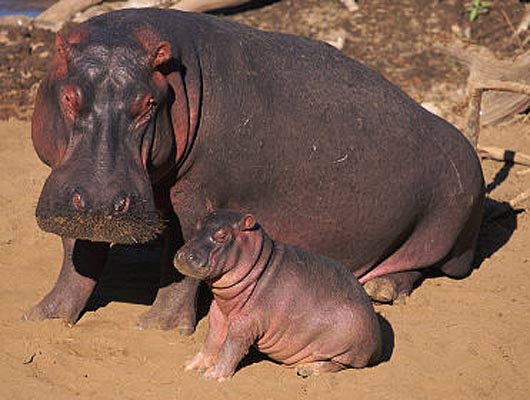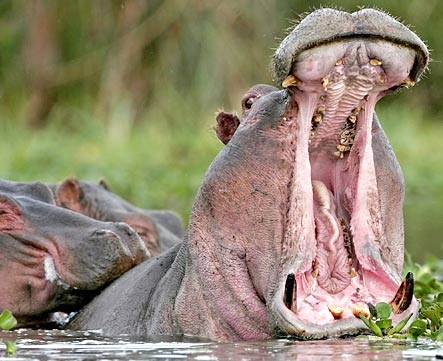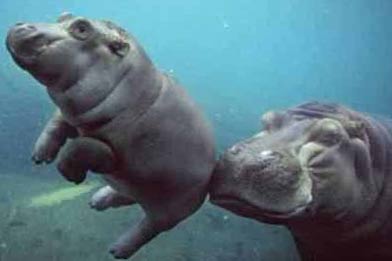Hippopotamus – Big Mouth River Horse

The hippopotamus or “river horse” (hippopotamus in ancient Greek) is well known for its large size and enormous mouth. Hippos are the second largest animals on land next to elephants and the third in line for heaviest. They are usually found lounging in a river or lake to keep their bodies cool throughout the warm sunny days. They like to feed when the sun goes down. They can live to be between 40 and 50 years old with one once living to the old age of 61 in captivity.
They are quite territorial in the water, but they are not when they are on land. They are dangerous to humans; they don’t seem to like people in the wild at all and will attack without provocation.
The hippo is a massive herbivore. It is really hard to believe that such well-built, bulky creature could only be plant eater but it is true. So what do they eat to sustain such a large body? Believe it or not just grass. Those big scary teeth are only used for defense and fighting.

Is it a Horse, a Pig or a Land Whale?
Just what animals are they most closely related to? Up until the early 20th century hippos were classified with pigs. This was all based on the teeth patterns – how their molars are a certain way, and how the teeth are lined up. After much scientific research it was determined that the hippo’s closest family lived within the ocean waters, being ceteceans (whales, dolphins) oddly enough. They just don’t have any close relations living on the land. Some speculate that over millions of years ago a certain type of whale morphed in a creature with legs that eventually turned out to be the today version of a hippo. It is amazing what millions of years can do to a creature! Over the many years, hippos have lost three species to extinction, five subspecies remain.

There are many unknown facts about hippos from their mating rituals to why they are not really social creatures. Researchers have observed that the only real bonding seems to occur between a mother and daughter. But even if they are not social creatures, they still congregate in the waters together. There may be some more mysteries to unravel about them and they are certainly respected for their size, shape and ability to adapt to the warm sun.

Crocs and Hippos usually don’t bother each other but this croc apparently attacked a calf and then paid the price as it was attacked by the herd
